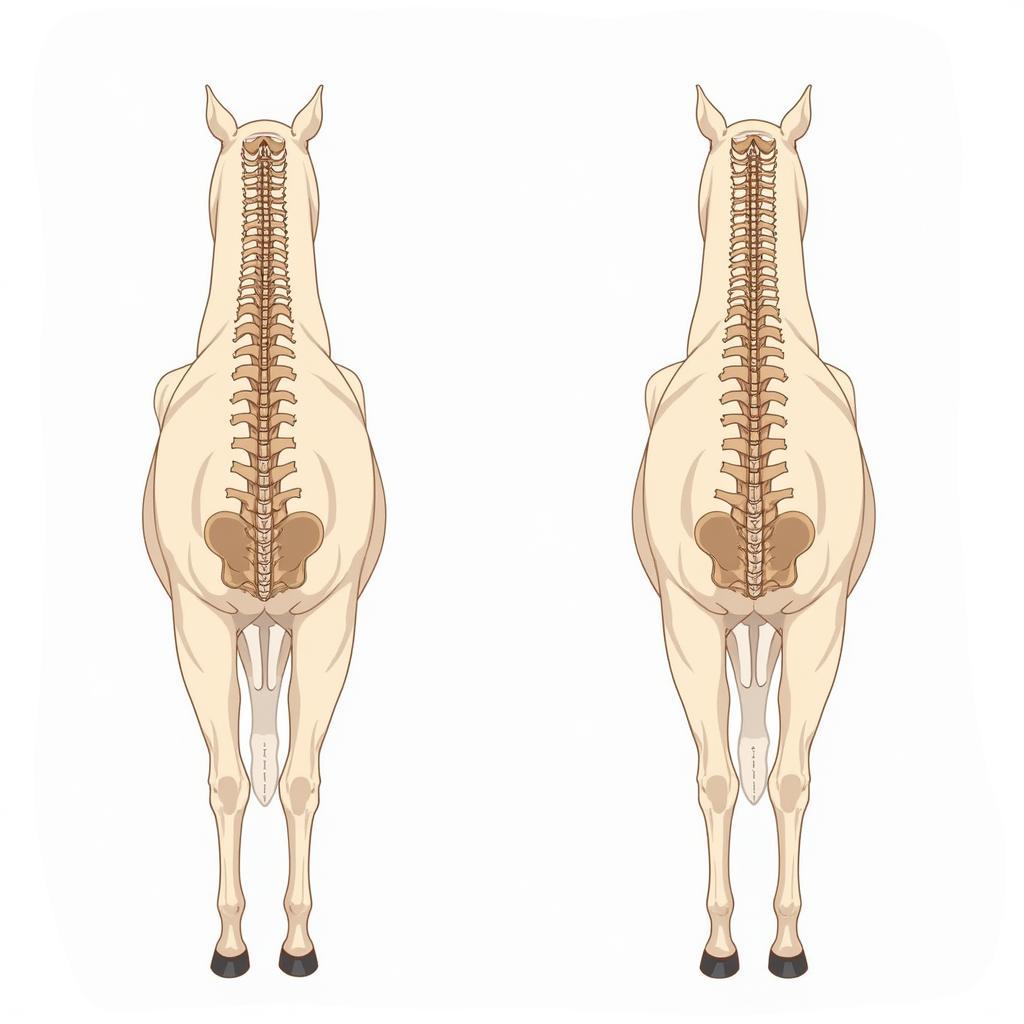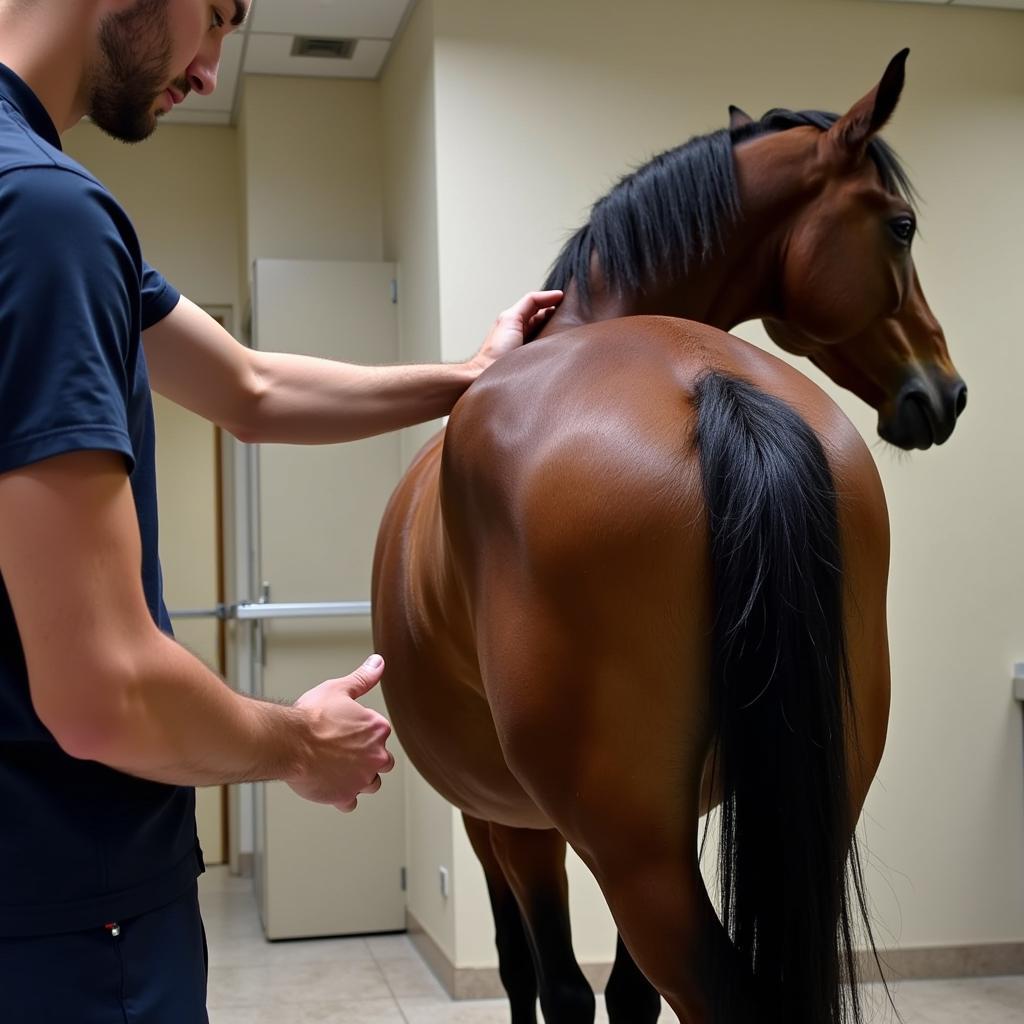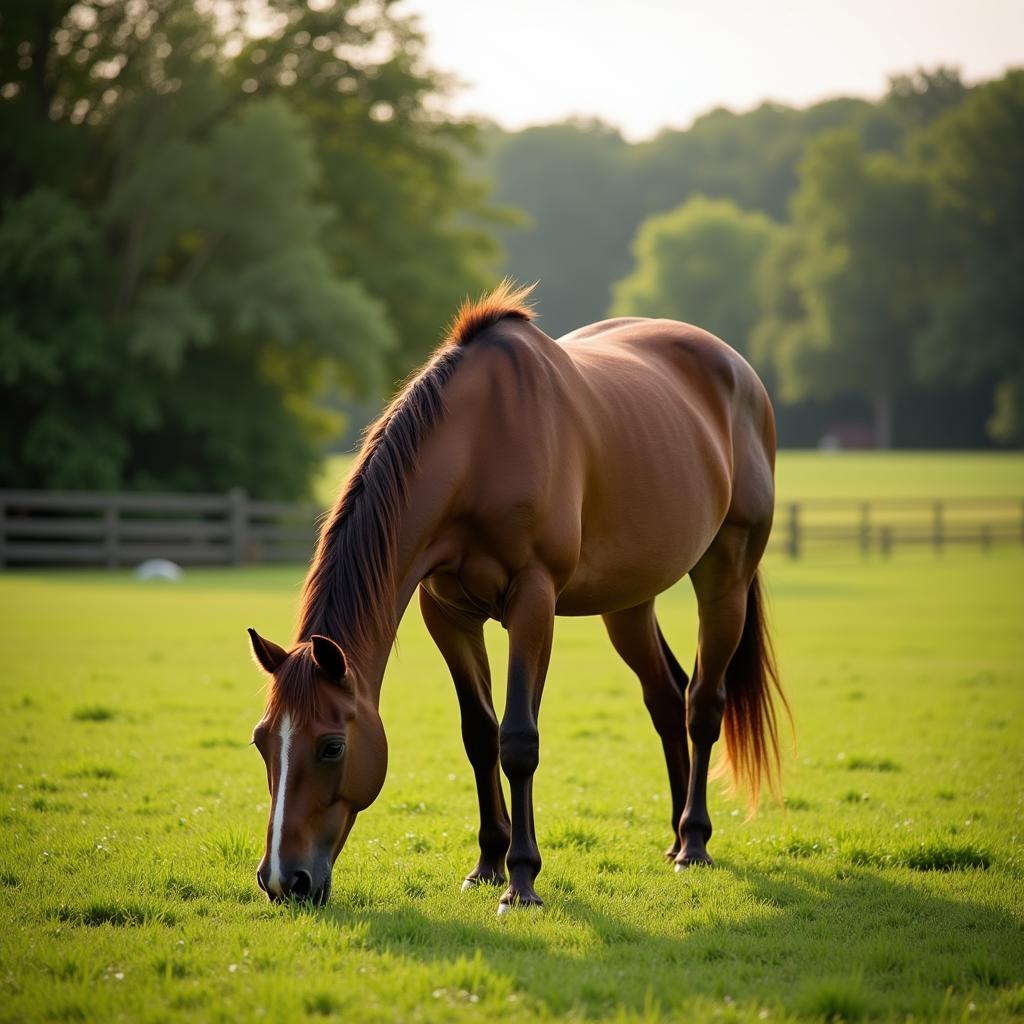Lordosis in horses, while not as common as other back conditions, can still significantly impact a horse’s wellbeing and performance. It’s essential for horse owners and enthusiasts to understand this condition, its causes, symptoms, and available treatment options.
What is Horse Lordosis?
Horse Lordosis, sometimes referred to as “swayback,” is a condition characterized by an abnormal inward curvature of the spine in the lumbar (lower back) and sometimes the thoracic (upper back) regions. This dip in the back can range from mild to severe, affecting the horse’s posture, movement, and overall health.
 Illustration of Horse Lordosis
Illustration of Horse Lordosis
Causes of Lordosis in Horses
Lordosis in horses can stem from a variety of factors, often interplaying to create the condition. Some of the most common causes include:
- Genetics: Certain breeds, such as Arabians and Thoroughbreds, may be genetically predisposed to lordosis.
- Conformation: Horses with long backs and weak abdominal muscles are more susceptible to developing lordosis.
- Age: As horses age, they can experience muscle loss and ligament laxity, which can contribute to lordosis.
- Trauma: Injuries to the spine, pelvis, or surrounding muscles can lead to changes in spinal alignment, potentially causing lordosis.
- Pregnancy: The added weight and strain on the back during pregnancy can cause or exacerbate lordosis in mares.
- Poor Saddle Fit: A poorly fitted saddle can put uneven pressure on the horse’s back, contributing to muscle atrophy and spinal misalignment.
Recognizing the Symptoms of Lordosis
Identifying lordosis in its early stages can significantly improve the prognosis for your horse. Here are some key symptoms to watch out for:
- Visible Dip in the Back: This is often the most apparent sign, particularly when the horse is standing squarely.
- Difficulty Bending or Flexing: Horses with lordosis may struggle to bend properly, especially in the back.
- Shortened Stride: Lordosis can affect a horse’s gait, leading to a shortened, choppy stride.
- Muscle Atrophy: You may notice muscle wasting along the horse’s back, particularly in the lumbar region.
- Reluctance to Work: Horses with lordosis may show unwillingness to perform certain movements or exercises due to pain or discomfort.
Diagnosis and Treatment Options
If you suspect your horse may have lordosis, it’s crucial to consult with a qualified veterinarian. They will perform a thorough physical examination, evaluate the horse’s medical history, and may recommend diagnostic imaging, such as X-rays, to confirm the diagnosis and assess the severity.
 Veterinarian Examining Horse for Lordosis
Veterinarian Examining Horse for Lordosis
While lordosis in horses is often manageable, it’s not typically curable. The focus of treatment is to manage the symptoms, improve the horse’s quality of life, and prevent further deterioration. Treatment options may include:
- Chiropractic Care: Chiropractic adjustments can help realign the spine and improve joint mobility.
- Massage Therapy: Regular massage can help relieve muscle tension, improve circulation, and promote healing.
- Stretching and Exercise: Targeted exercises and stretches can help strengthen the back muscles and improve flexibility.
- Weight Management: Maintaining a healthy weight is crucial, especially for pregnant mares or horses prone to obesity.
- Corrective Shoeing: Therapeutic shoeing can help improve the horse’s posture and gait.
- Pain Management: Non-steroidal anti-inflammatory drugs (NSAIDs) or other pain relief medications may be prescribed to manage discomfort.
Living with Horse Lordosis: Tips for Owners
Managing a horse with lordosis requires a proactive approach and a commitment to their ongoing care. Here are some essential tips for owners:
- Work Closely with Your Veterinarian: Follow your veterinarian’s recommendations for treatment, exercise, and rehabilitation.
- Provide a Balanced Diet: Ensure your horse receives a high-quality diet that meets their nutritional needs.
- Invest in a Properly Fitted Saddle: A well-fitted saddle is essential to prevent further back problems.
- Monitor for Changes: Regularly assess your horse’s movement, posture, and overall condition, informing your vet of any changes.
Early Detection is Key
Early detection and intervention are crucial in managing horse lordosis. By understanding the causes, recognizing the symptoms, and seeking prompt veterinary attention, you can help your horse live a healthier, more comfortable life.
 Horse Grazing Peacefully in Pasture
Horse Grazing Peacefully in Pasture
FAQs About Horse Lordosis
1. Is lordosis painful for horses?
While mild cases might not cause noticeable discomfort, moderate to severe lordosis can lead to pain and stiffness, particularly during movement or exercise.
2. Can lordosis be corrected in foals?
In some cases, mild lordosis in foals may improve as they grow and their muscles develop. However, early intervention with corrective trimming and exercise is essential.
3. Can I still ride my horse if they have lordosis?
The suitability of riding depends on the severity of the condition and your veterinarian’s assessment. Some horses with mild lordosis can be ridden with modifications to their training regimen and equipment.
4. What is the prognosis for horses with lordosis?
With proper management and care, many horses with lordosis can lead active, fulfilling lives.
5. How can I learn more about equine back health?
For further information on horse lordosis and other equine health concerns, please visit the educational resources on our website or contact Justus Horses USA at 0772127271 or [email protected]. Our team of experts is dedicated to providing compassionate care and guidance for your equine companions. We’re located at QGM2+WX2, Vị Trung, Vị Thuỷ, Hậu Giang, Việt Nam, and our customer service team is available 24/7.